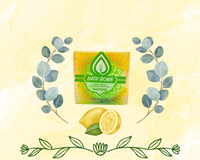If you're comfortable in the kitchen, you must know herbs are essential in cooking. Some of the most common herbs used in Western dishes are parsley, thyme, sage, and basil. These herbs are chock-full of special compounds called terpenes; that’s what gives them their unique aromas. And they're not just in herbs - they're in fruits, flowers, and cannabis, as well as many other plants. But are these terpenes more than just smell or flavor? The history of natural remedies and modern research both suggest that terpenes could have beneficial properties for humans. Let’s get familiar with some common terpenes.

We know that there are over 200 different types of terpenes in cannabis plants alone, but only a few occur in high enough quantities to be detectable by the human nose. Each chemovar (or “strain”) produces a unique blend of terpenes for its characteristic smell and flavor. For instance, Super Lemon Haze is especially high in limonene. Limonene is a terpene commonly occurring in citrus fruits, and is a great example of how different plants express the same terpenes - it is literally the same molecule giving Super Lemon Haze its trademark smell as it does in lemons, which is the same again as the popular floor-cleaner additive with a clean lemon scent. Limonene is also sometimes used as an organic insecticide, as well as in chemical extraction; many terpenes possess interesting or unique qualities which determine the ways they are applied in commerce, industry, and home healing. Eucalyptol can be used as a penetration enhancer for medicinal patches, which helps the active ingredient cross the skin barrier.
Among the 200 different types of terpenes, 11 tend to occur in amounts great enough to allow detection by the human nose. Of the 11 most common terpenes, myrcene seems to be more abundant across chemovars than most of the others.
- Myrcene has an earthy, musky, and fruity smell. It acts as a sedative, is typically found in indica strains, and may have potent anti-inflammatory properties.
- Limonene is also commonly found in salves and ointments because it soaks into the skin easily. It has a bright citrus smell and may help with weight loss, bronchitis, and even cancer.
- Linalool has a strong lavender aroma with a kick of spice. Linalool can be found in various flowers, mint, cinnamon, and fungi. It may have the potential to be anti-inflammatory. It has also been noted that it's capable of helping modulate motor skills, and could even help with liver cancer. Lavender, of which linalool is the most abundant terpene, has been traditionally used as a remedy to invoke calm and sleep.
- Alpha-Bisabolol is a terpene often identified with chamomile, which has a floral scent. Research suggests that alpha-bisabolol has anti-inflammatory properties, and has also been found to help fight bacteria. It's also commonly used as a deodorizer.
- Delta 3 carene is another common terpene. This terpene has an earthy, pine-y aroma and flavor. It is suggested to have anti-inflammatory properties, and has been used to dry tears and runny noses.
- Borenal has an earthy taste as well, and has been used as a painkiller, anti-insomnia, antiseptic, and bronchodilator.
- Alpha-Pinene & Beta-Pinene are where pine trees get most of their scent from. They have also been known to show anti-inflammatory properties.
- Eucalyptol has a spicy fragrance and is often used to cook with. This terpene can be found in cough suppressants and mouthwash, as well as medicated patches.
- Terpineol is yet another terpene with a piney scent, and studies show that it may exhibit antioxidant action.
- Caryophyllene is a terpene found abundantly in hops, most commonly used to make beer. Cannabis and hops are very close genetic cousins. Caryophyllene is unique among the terpenes in that it has been shown to be a potent cannabinoid receptor agonist; researchers showed that it is a more potent CB2 receptor agonist than CBD.
- Lastly we have camphene, which has an herbaceous, woody aroma. It has long been used for its anti-inflammatory and antioxidant properties.

This terpene showcase contains many hints about why cannabis and broad-spectrum CBD are used to alleviate such a wide array of conditions. One thing most of the terpenes have in common is the anti-inflammatory properties. Inflammation is definitely one of the main reasons a lot of people start using CBD oil, but would it be more beneficial to use a product that also contains terpenes? The answer is...maybe. The entourage effect is well-documented, and describes how broad-spectrum and full-spectrum products are more effective than isolated CBD due to the synergy between all the compounds on the plant, making the combined effect greater than the effect of each part individually. Part of that entourage effect depends on terpenes.


























